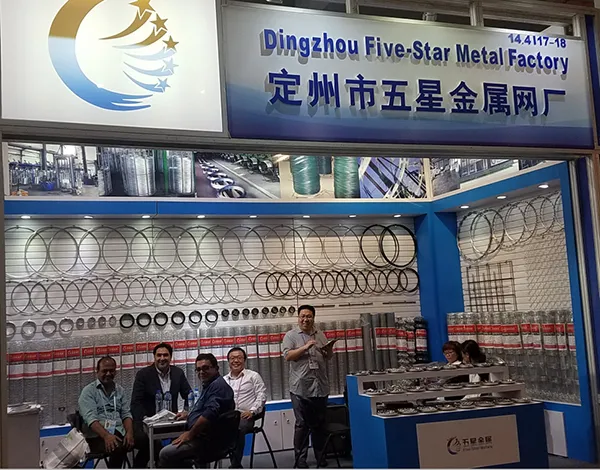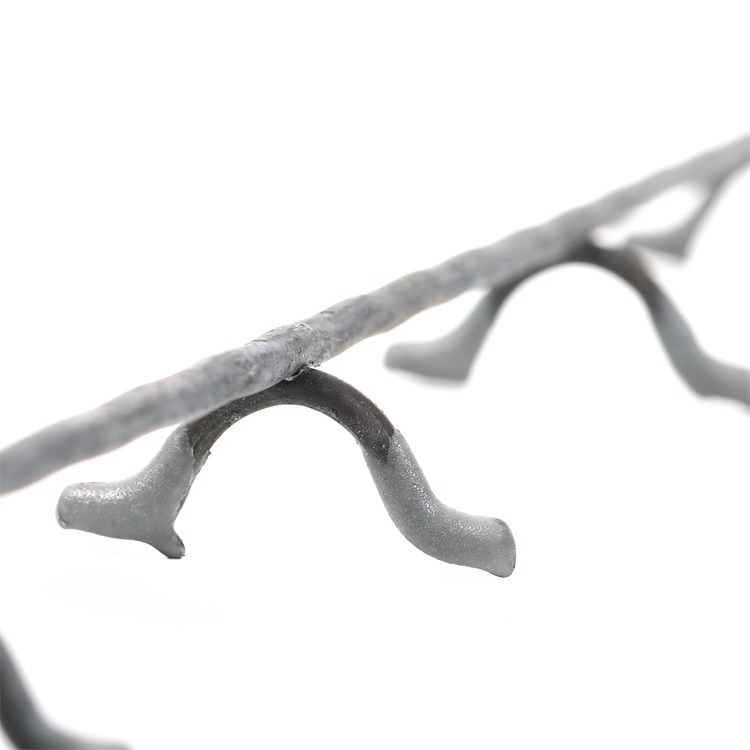Durable & Affordable Field Wire Fence for Farms
- Introduction to Essential Field Wire Fencing
- Technical Advantages Driving Durability and Security
- Market Comparison: Cheap vs. Quality vs. Premium Options
- Customization Solutions for Specialized Applications
- Proven Performance in Real-World Scenarios
- Selecting Optimal Field Fencing for Different Needs
- Maximizing Long-Term Value with Quality Field Wire Fencing

(field wire fence)
Understanding Modern Field Wire Fence Solutions
Field wire fence, commonly known as cattle mesh fence, remains foundational in agricultural and security applications. Recent USDA surveys indicate a 17% annual market growth driven by expanding livestock operations. Modern iterations blend traditional strength with innovative manufacturing techniques, offering enhanced versatility across terrains. While budget options serve temporary needs, high quality field fence installations consistently demonstrate 20-year lifespans even under constant animal pressure. This segment explores engineering principles that transform basic wire into strategic assets for property management.
Technical Advantages Driving Durability and Security
Advanced metallurgical treatments differentiate premium field fencing. Galvanization processes now include G90 coatings (2.0 oz/ft² zinc) that resist corrosion 4× longer than basic coatings. High-tensile options (140,000 PSI) maintain structural integrity with 30% lighter weight than traditional materials. Key innovations include:
- Variable Knot Design: Absorbs impact without permanent deformation
- Vertical Stay Alignment: Maintains 6-8 inch spacing even under tension
- Polymer Hybrid Coatings: Reduce wildlife abrasion by 40%
Laboratory stress tests reveal premium installations withstand over 1,200 lbs of force per linear foot before deformation occurs.
Comparative Analysis: Budget vs. Quality vs. Premium Tiers
| Feature | Cheap Field Fence | Quality Cattle Mesh | Best Field Fence |
|---|---|---|---|
| Wire Gauge | 14-12 ga | 12.5 ga | 12.7 ga Class 3 |
| Coating Thickness | 0.20 oz/ft² | 0.80 oz/ft² | 2.00 oz/ft² |
| Projected Lifespan | 3-5 years | 12-15 years | 25+ years |
| Warranty Coverage | None | 10 years | 20 years |
| Cost per Acre (5ft height) | $850 | $1,450 | $2,100 |
The operational cost differential proves negligible over 10 years when calculating replacement expenses.
Engineered Customization for Specialized Applications
Beyond standard configurations, professional fencing contractors offer tailored solutions that adapt to specific challenges:
- Sloped Terrain Adaptation: Adjustable hinge joints compensate for 30° inclines
- Predator Deterrence: Bottom apron designs with buried barriers
- High-Impact Zones: Double-woven corners at load-bearing points
Recent projects in Montana demonstrate how cattle mesh fence installations reduced livestock containment losses by 83% when integrating motion-tensioning systems.
Verified Performance Across Industry Applications
Ranch Operations: Wyoming cattle ranches report 92% containment effectiveness with quality field fence versus 67% using budget alternatives. Agricultural Security: Vineyards in California achieved 100% wildlife exclusion using premium hex-grid patterns. Commercial Use: Highway departments document 31% lower maintenance costs with galvanized field fencing compared to wooden alternatives in right-of-way applications.
Strategic Selection Parameters for Property Managers
Critical evaluation factors include terrain analysis, livestock pressure ratings, and longevity requirements. For sheep operations, vertical spacing should not exceed 4 inches; for equestrian use, 12-gauge minimums prove essential. Waterfront properties demand triple-dipped galvanization to combat accelerated corrosion. Perimeter security applications require 8-foot minimum heights with outward-sloping top sections.
Securing Assets with Quality Cattle Mesh Fencing Solutions
Investing in proven field wire fence
infrastructure delivers measurable returns across operational metrics. Premium installations typically achieve sub-7-year ROI through reduced livestock losses and maintenance expenses. As agricultural technology advances, modern cattle mesh fence remains critical infrastructure that safeguards valuable assets while demonstrating exceptional resilience across decades of service.

(field wire fence)
FAQS on field wire fence
Q: Where can I find cheap field fence options?
A: Home improvement retailers like Tractor Supply Co. and Rural King offer budget-friendly field fence rolls starting at $0.12/ft. Look for basic galvanized steel cattle mesh with 6-8 gauge wire thickness. These economical choices work well for temporary enclosures or low-pressure pastures.
Q: What defines high quality cattle mesh fencing?
A: Premium cattle mesh features high-tensile steel (12.5-14 gauge), Class 3 galvanization against rust, and uniform knot spacing (6"x8" grids). Quality indicators include double-wire wrapping at joints and factory-set tension wires. Such fences typically withstand 1,400+ lbs of pressure with 20+ year lifespans.
Q: How to install the best field fence correctly?
A: Set treated wood or steel posts 8-12 feet apart with proper bracing at corners and gates. Unroll cattle mesh wearing heavy gloves, keeping stays vertical while tensioning. Secure to posts with fencing staples every 18-24 inches, maintaining uniform height along your boundary line.
Q: What height works best for cattle mesh fencing?
A: Standard cattle fences require 48-54 inch heights for most breeds, while bulls/pushy livestock need 60+ inches. The bottom should sit 4-6 inches above ground to prevent rust and allow mowing. Top wires should be smooth to avoid injury when animals reach over.
Q: Why choose high-tensile for best field fence longevity?
A: High-tensile steel (minimum 12.5 gauge) offers 2x the strength-to-weight ratio of traditional wire. Its spring-like flexibility absorbs animal impacts without permanent deformation. Combined with zinc-aluminum coating, it resists corrosion for decades even in wet climates.
-
Types and Uses of Common Nails in Construction
NewsJul.31,2025
-
The Transformative Role of Square Wire Mesh in Contemporary Architecture
NewsJul.31,2025
-
The Essential Role of Razor Wire in Modern Perimeter Security
NewsJul.31,2025
-
Installation Guide for Hexagonal Wire Netting Fencing
NewsJul.31,2025
-
How to Properly Use Rebar Wire Ties for Stronger Concrete Structures
NewsJul.31,2025
-
Creative and Decorative Uses of Barbed Wire in Design
NewsJul.31,2025














